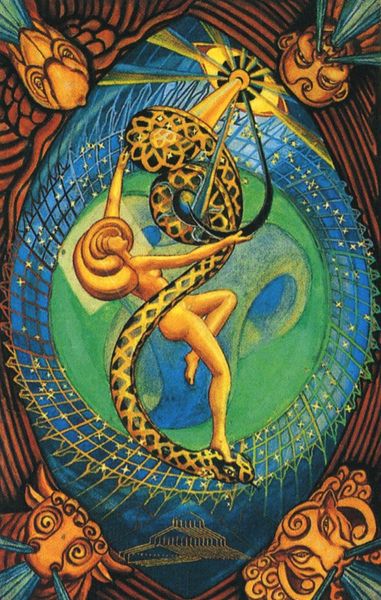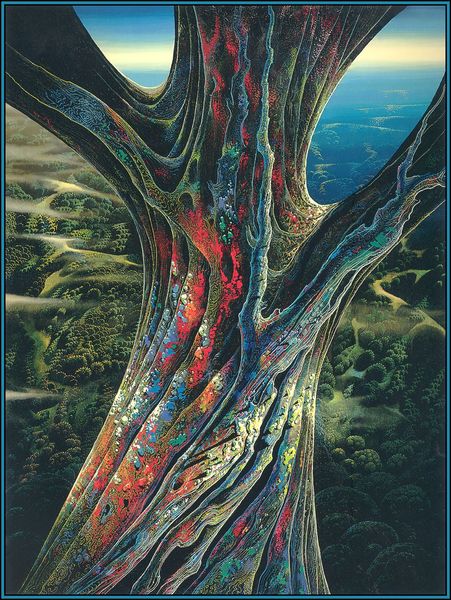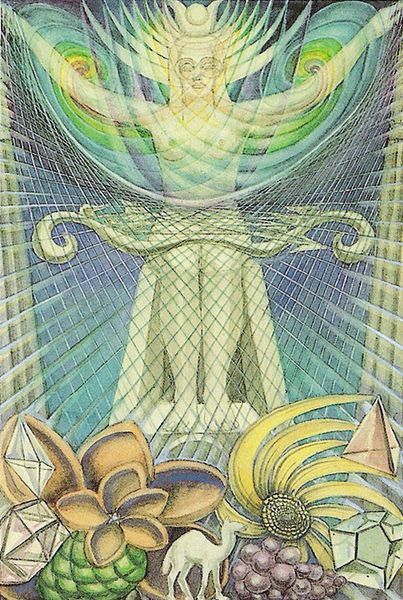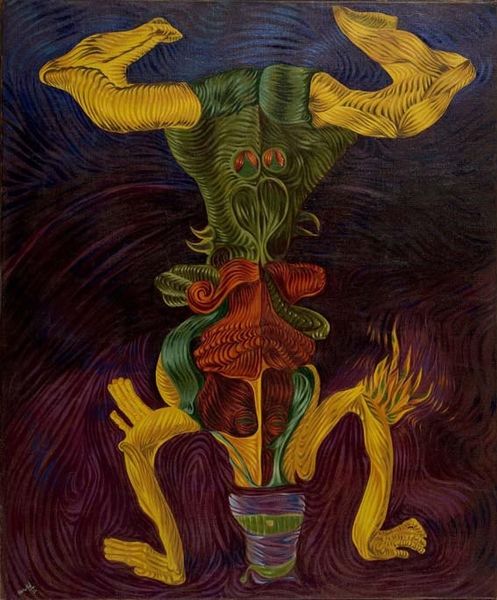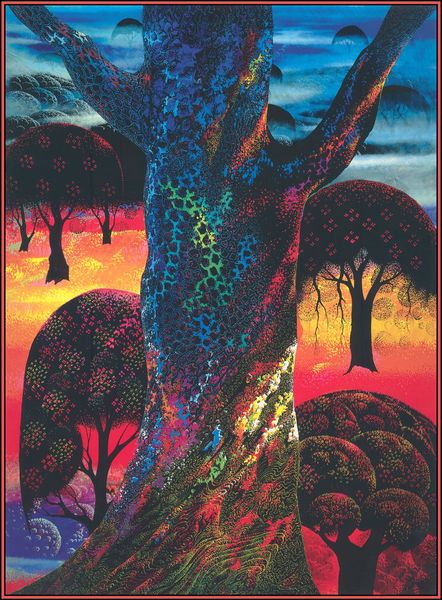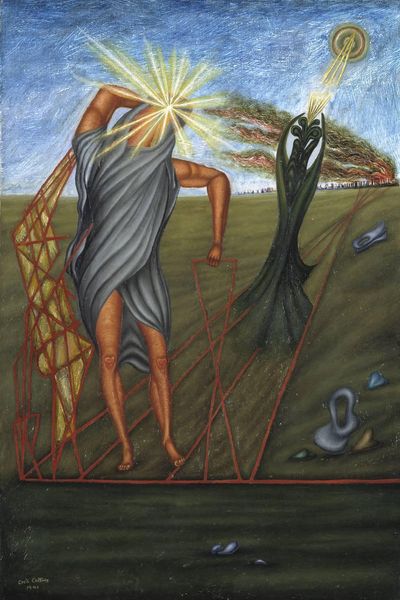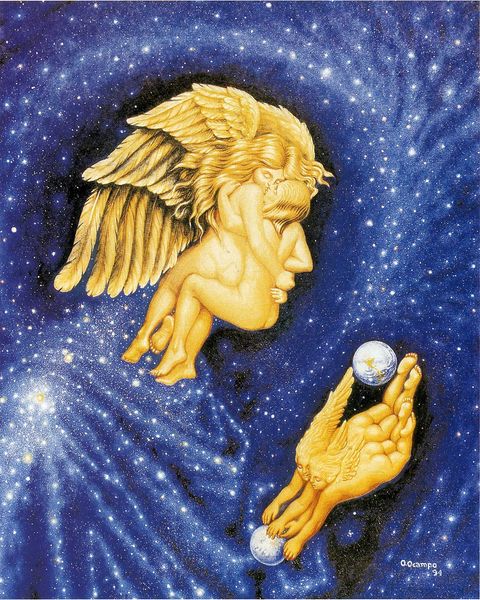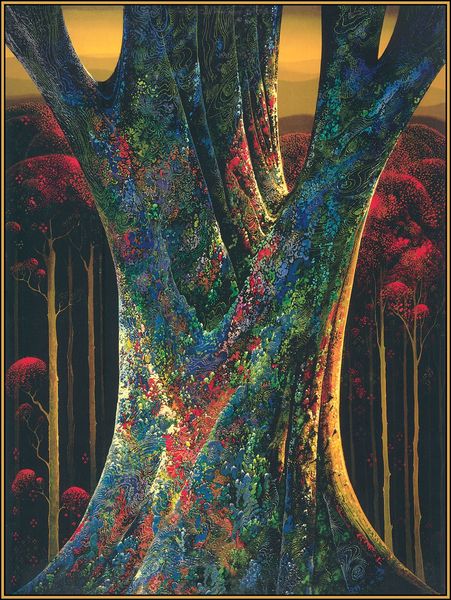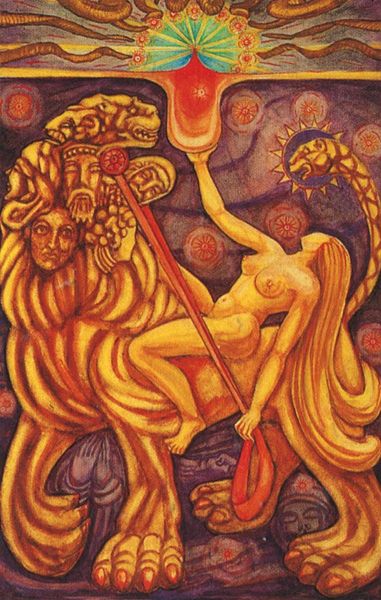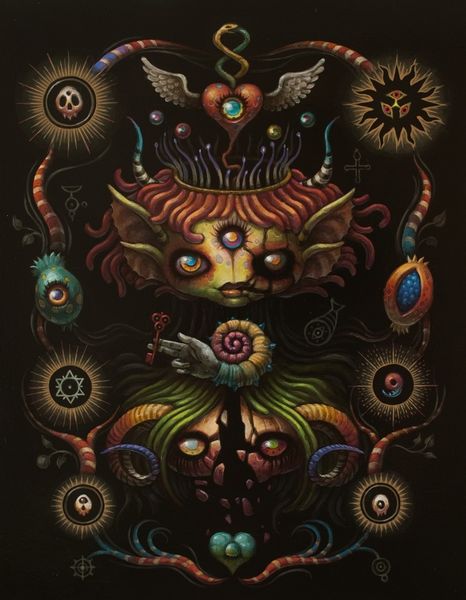
Copyright: Ernst Fuchs,Fair Use
Curator: Ernst Fuchs's acrylic painting, ADAM MYSTICUS, created in 1982, certainly has an immediate impact, doesn’t it? The entire composition seems to vibrate with symbolic tension. Editor: It feels…crowded. Like a surreal stage where too many dramas are unfolding at once. But the serpent coiled around the central figure is immediately arresting, and the ethereal figure above feels almost…liberating, or offering some kind of salvation. Curator: The “crowded” feeling is integral to Fuchs’s oeuvre, I believe. It's a calculated density that pulls in multiple layers of symbolic weight, stemming from his engagement with the Vienna School of Fantastic Realism, seeking to rekindle surrealism and inject spiritual elements. You can see influences from diverse traditions—alchemy, mythology, Christianity, Jewish mysticism—all converging here. Editor: Absolutely. That serpent isn’t just any serpent; it echoes the Edenic tempter, coiling around what appears to be Adam. Yet the way he's interwoven with the tree also makes me think of the Kabbalistic Tree of Life, representing spiritual ascent. And then there’s the nude figure, a female figure holding up a fruit - is this Eve, or some higher, Gnostic principle offering forbidden knowledge? Curator: Fuchs himself intended this image to serve as the unveiling of hidden realities, revealing mankind’s essential interconnectedness within an esoteric vision. We have the animals to either side – a fox, traditionally representing slyness or trickery, and a rabbit that often serves as a symbol of fertility, or even the start of a journey as we see a script-covered marker on the side near it. All the symbols are placed perfectly in relationship to one another. Editor: Given the prevalence of religious themes and their subversive interpretation in art at that time, would you say the piece attempts to undermine religious dogmatism by merging numerous different cultural narratives into something more humanist or even anarchic? Curator: Certainly, he lived through a period deeply affected by secularization and re-examination of orthodox faith and beliefs. By pulling these seemingly contradictory myths together in his distinctive art style, with that smooth finish, the vivid colors and stark rendering, Fuchs does force the audience to rethink rigid interpretations and perhaps, arrive at something more nuanced. Editor: Looking at the details has helped unpack its many layers. I originally saw just a cacophony of forms and images. Curator: And now, perhaps, you can see how it fits into a long and complex artistic legacy that uses symbolism to create a space for dialogue and personal revelation.
Comments
No comments
Be the first to comment and join the conversation on the ultimate creative platform.
